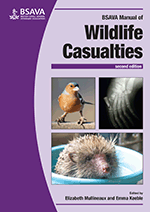
Full text loading...

The Eurasian red squirrel is Britain’s native squirrel. Its range and population have both suffered dramatically as a result of the introduction of the larger Eastern grey squirrel. The decline of the red squirrel population has been attributed to a variety of factors including habitat loss and fragmentation, competition and infection by the squirrelpox virus. This chapter covers: ecology and biology; anatomy and physiology; capture, handling and transportation; clinical assessment; first aid and hospitalization; anaesthesia and analgesia; specific conditions; therapeutics; husbandry; rearing of squirrel kittens; rehabilitation and release; and legal considerations.
Squirrels, Page 1 of 1
< Previous page | Next page > /docserver/preview/fulltext/10.22233/9781910443316/9781910443316.13-1.gif

Full text loading...









